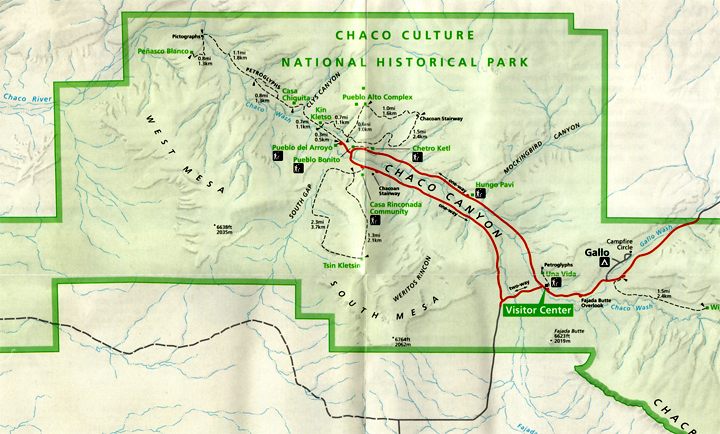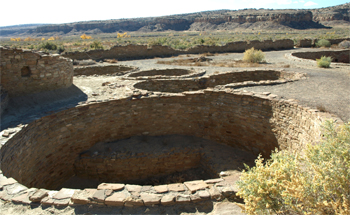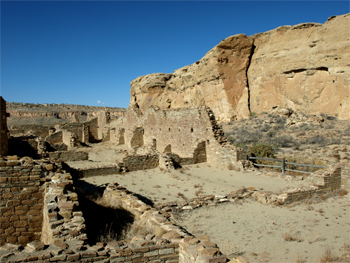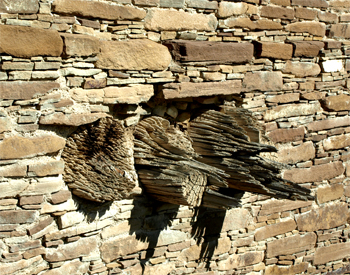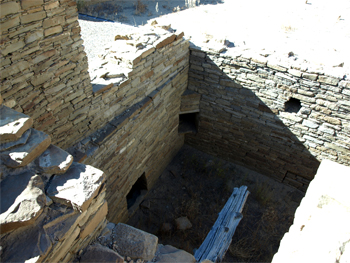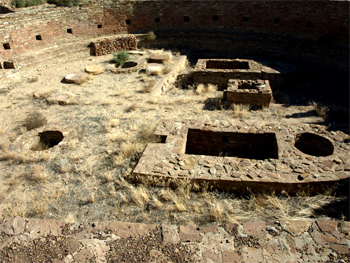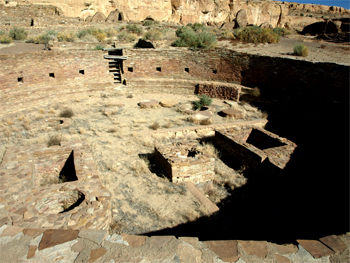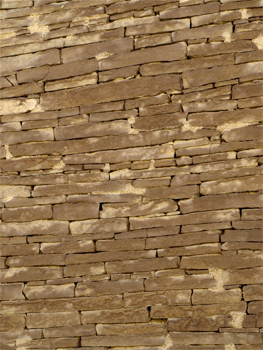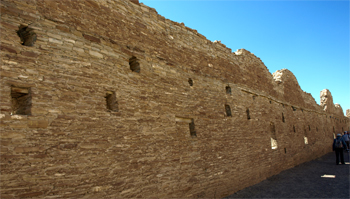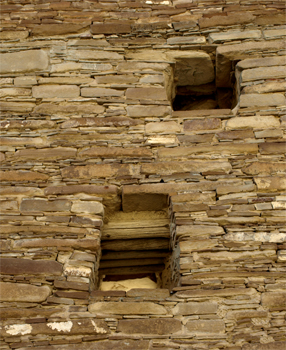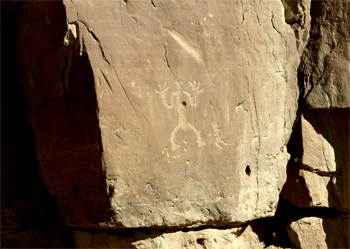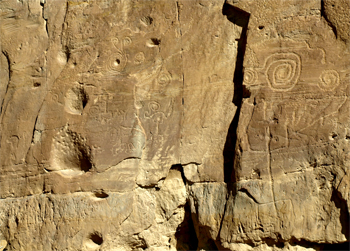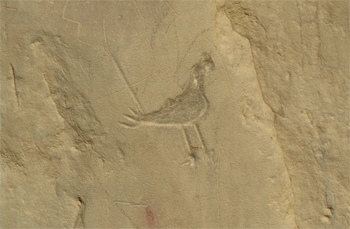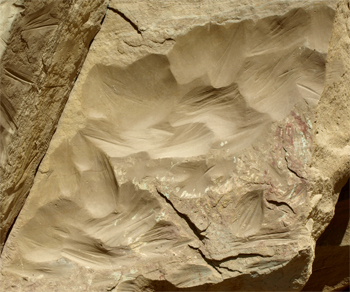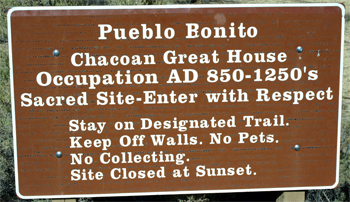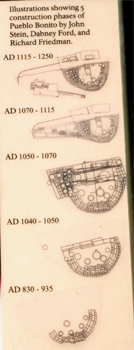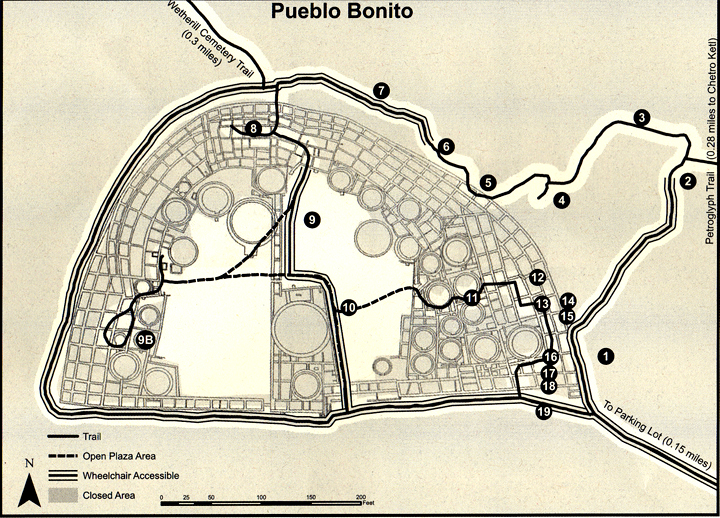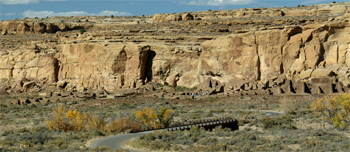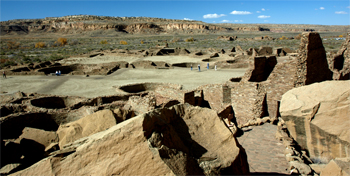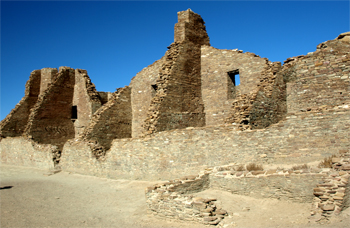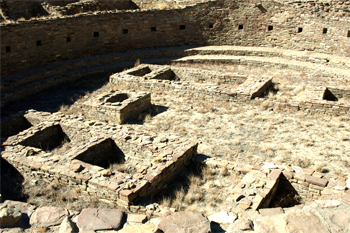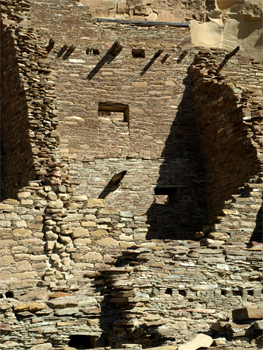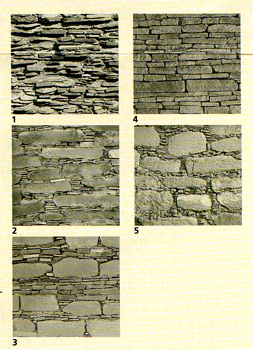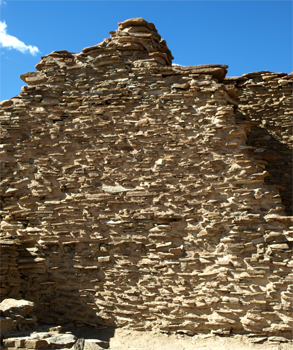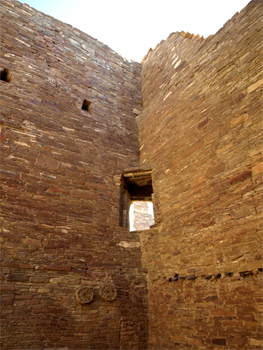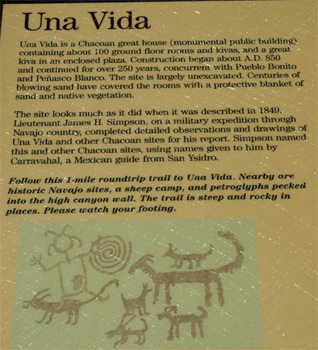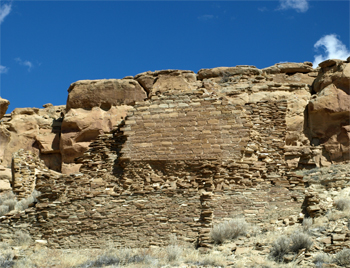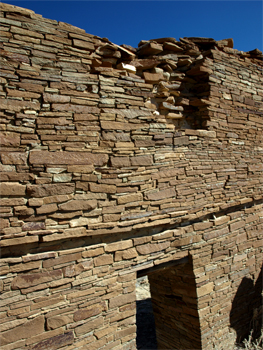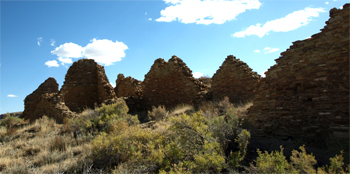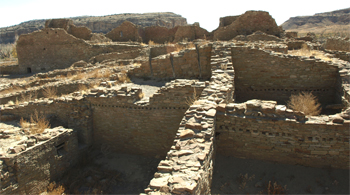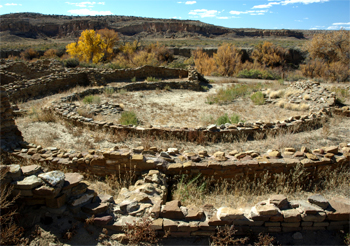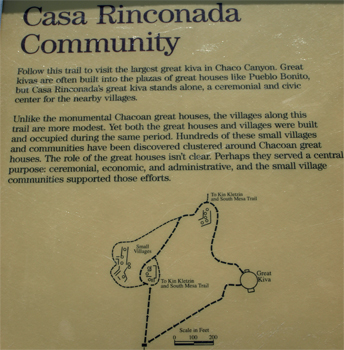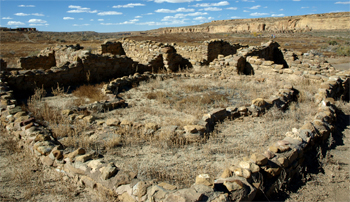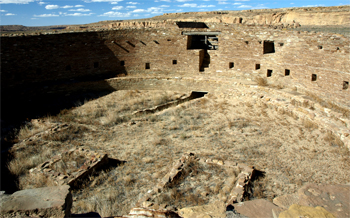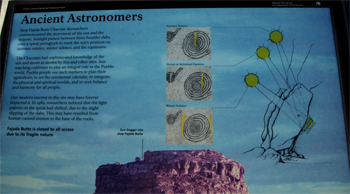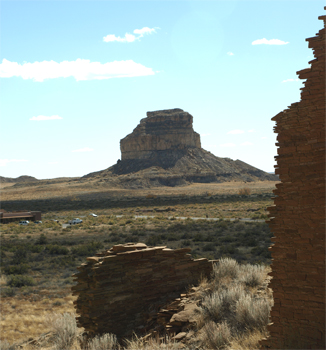Monday, 10/19 – Aztec, NM - Chaco Culture National Historical Park- to Santa Fe
We spent today at Chaco Canyon at the Chaco Culture National Historical Park (usually just called Chaco Canyon) looking at numerous village sites. We switched from our motor coach to a yellow school bus and rode 45 minutes down a washboard dirt road to enter the north end of the National Monument. The bus ride was very jarring. The canyon floor must have been alive with many pueblos between 1050 and 1250 AD.
Chaco Culture National Historical Park Map
|
|
Our first stop was at Chetro Ketl, the second largest village with over 650 rooms. It had the usual curved front wall, tower kiva, great kiva, and a straight line back wall. All were built and occupied by Chacoans and later reoccupied by Puebloans, as evidenced by numerous round kivas inside square rooms. The great kiva was a lunar site because it had 28 niches in the wall. We could see the four post bases and each was a different diameter, perhaps because each one was the base of a different bunch of sacred trees lashed together. The sacred trees are Ponderosa pine, Douglas fir, cottonwood, and aspen. It is a huge site.
|
|
|
Kiva at Chetro Ketl
|
Ruins at Chetro Ketl |
Original vigas
|
Room at Chetro Ketl
|
Great Kiva at Chetro Ketl |
Great Kiva at Chetro Ketl |
Masonry at Chetro Ketl
|
Straight back wall at Chetro Ketl |
Vigas and masonry at Chetro Ketl
|
Some of our group walked past a bunch of petroglyphs on our way to the next site. On the cliff wall we saw lizard man, frog man, bear claw, snake, caterpillar, mountain lion, etc. Glyphs with men on horses and crosses, signifying Spaniards and maybe other missionaries, were added much later by Navajos. There were several areas along the same cliff face that were used for sharpening tools.
|
|
Frog man petroglyph
|
Petroglyphs |
Petroglyphs |
Tool sharpening area
|
Pueblo Bonito is the largest site, with maybe 800 rooms. There are 2 great kivas - East and West - and a large flat, hard packed surface that was probably a ceremonial dance floor. There are walls built using all five types of masonry: Puebloan I, II, III, IV, and Mc Elmo. Type I was more adobe than stone; II and III had four thin slab layers then one layer of bread loaf size blocks; IV was so tight and neat it needed no mortar; and McElmo was unlayered large rocks probably built by the latest inhabitants.
|
|
|
Pueblo Bonito construction phases
|
Map of Pueblo Bonito
|
|
Pueblo Bonito as seen from Casa Rinconado |
Pueblo Bonito
|
Pueblo Bonito
|
Great Kiva at Pueblo Bonito |
Varieties of masonry at Pueblo Bonito
|
Masonry Types |
Type 1 masonry at Pueblo Bonito
|
Pueblo Bonito |
Corner door at Pueblo Bonito
|
We had another sandwich picnic lunch and then some of us walked out to look at Una Vida, which was an early site (maybe 850 AD) and had 100 ground level rooms with second and third levels above them. It is unique because it has been left as it was found in 1848. The straight wall here is in line with the maximum southern moonset.
|
|
Chacoan masonry at Una Vida |
Una Vida ruins
|
Pueblo de Arroyo has another large great house, a tri-walled kiva with no explanation as to why three walls with maybe four feet between them were built around it. This was a later site and had many examples of Type III, IV, and McElmo walls. It was obviously reoccupied and there are no typical features apparent in the kivas.
|
|
Pueblo Del Arroyo
|
Pueblo Del Arroyo |
Tri-wall construction as Pueblo Del Arroyo
|
Casa Rinconada was a different kind of place. There are six to ten groups of rooms with very poorly made single course walls. These rooms may have been used by the laborers who built some of the other great structures. There are pottery shards lying around on the ground and they were not very fancy. There was also evidence of cannibalism in some of the excavated rooms. One theory is that this was a way of forcing compliance of the people. Much of this site has been backfilled. On a nearby hill, the highest on the canyon floor, is one more Great Kiva - the largest. It has two large mystery boxes, two T doors, a large fire pit, a double bench, and a ramp for performers to enter from below the floor level in a cloud of smoke. It is also a lunar site with 28 niches. It is built right at the intersection of the georitual north-south and east-west lines.
|
|
|
|
Casa Rinconada |
Great Kiva at Casa Rinconada
|
We stopped at the Sun Dagger on Fajada Butte on our way out of the park. The “sun dagger” is three large slabs of rock aligned to cast a shadow over a solar coil and a lunar coil (petroglyphs) on every maximum and minimum solstice of the sun and moon. It is very clever.
|
|
Google "Fajada Butte" and/or "Sun Dagger" for more information on this fascinating subject |
Fajada Butte
|
We bounced our way back over the washboard and were happy to reboard our motor coach. We had Tex-Mex dinner at El Bruno’s in Cuba, NM and then arrived back at the Holiday Inn on in Santa Fe at 9:45 PM.
Tuesday, 10/20 – Santa Fe
We said “goodbye” to our tour group after breakfast. We had a nice tour and learned a lot about the southwest Indians and their culture. It is interesting that so little is known about the Puebloans and Chacoans. They had no writing and they did not bury people with jewels and pottery, etc. like the Incas, Aztecs, Greeks, Romans, and Egyptians. Even their middens gave very few clues. Petroglyphs and pottery designs also do not tell much of a story. Their masonry structures leave a lot to guesswork. Maybe that is why so many of the sites are being backfilled for study in the future when better techniques will be available.
We packed up and moved to the Villas de Santa Fe and our resort apartment for the next three nights. We are quite tired so we sat around most of the day. It started to rain this afternoon but we can’t complain after the wonderful weather we had for the tour.
Wednesday, 10/21 – Santa Fe
It is snowing this morning!! We spent a lazy day looking at furniture stores (looking for end tables and lamps for our great room) and browsing in amazement at the eclectic collection of “stuff” at Jackalope on Cerrillos Rd.
Thursday, 10/22 – Santa Fe
It was cold and raw today, but not raining. We walked to the plaza area before and after lunch and strolled around the shopping areas. Our money remained safely in our pockets - the prices of interesting things were generally outrageous.
Friday, 10/23 – Santa Fe to Estes Park
We left Santa Fe at 8 AM and arrived home at 4:30 PM. We stopped twice for gas and once for lunch. It was clear and dry all the way home.
Return to Trips page to view other trips
| Return to Top | Return to Anasazi Itinerary | Return to Dreamcatcher Home Page |
